Leaderboard
Popular Content
Showing content with the highest reputation since 10/21/2025 in all areas
-
PREFACE This new series „Tsuba are beautiful - Kantei Series“ is dedicated to collectors, friends, and enthusiasts who appreciate genuine Japanese art as much as I do. I share my knowledge from today’s perspective, offering insights that may help when, perhaps in a hidden corner of your favorite antique shop—or even online—you come across a precious Tsuba that captivates you, though you may not yet know much about it. By following this series, you’ll learn to work methodically toward identifying unsigned Tsuba on your own. I hope it will be helpful for your future collecting journey and maybe even ignite the spark for new collectors to begin theirs. Please enjoy—and feel free to ask questions or share your opinions. Let’s discuss kindly and respectfully, whether you agree or disagree. Remember, collecting is a shared journey; respect for others’ views keeps our community strong. You will find the link here: Tsuba are beautiful - Kantei Series #01: “The Black Shakudo Tsuba - Ko-Kinko, Kyo Shoami or Soten?“ Enjoy reading! Best wishes, Tobi www.nihonto.art www.tsuba-no-kake.com14 points
-
Hi Kevin, Great question. There is a tradition of attribution that goes back to the 17th century where respected appraisers wrote the name of the maker in gold inlay on the tang of the blade (Kinzogan). Some of the shortening were performed by this group, called the Hon'ami, and as a result they had access to many more signatures than we do today. The attribution "Go Yoshihiro" has a number of canonical traits (e.g., Ichimai boshi, first class nie, shallow sori, habuchi that increases towards the kissaki...) that have been studied since the Momoyama period. There is, of course, a substantial degree of uncertainty with attributed blades. Attributions on mumei works are best understood as "this is the most likely maker given what we know today" - and even more conservatively as a way to state that a sword expresses certain traits and a certain level of quality that is in line with reputation of a certain master smith. In this sense, there is a tradition of attribution that has been honed over generation of competent judges, based on ancient literature and oral transmission. I would advise caution on mumei Soshu blades to big names that are without Ko-Kiwame (old appraisal by the reputable judges) or established provenance from Daimyo collection with a high-level record of gift-giving. Makers during the Shinto era, such as Nanki Shigekuni or Shinkai came very close to Go, and one should always examine the sword critically. Best, Hoshi12 points
-
Assisting an old collector to sell his 3 papered swords that he has owned for while. He is not confident enough to do the listing and asked me to assist. He got into it during Covid, purchased them in 2021 and is no longer collecting. All 3 were imported from Japan, purchased from Samuraimuseum, with a lot invested in the shipping, vat, duties etc etc. He is in Basingstoke, and would prefer to keep the sale within the UK for now. All 3 in polish, and papered Toku Hozon. He has upgraded the fittings on some with papered tosogu, that were purchased from dealers, and had professional rewraps done on some. All the details are in the sales flyers below. If anyone has any interest, you can comment and I'll put you in touch. I am sure he's a little negotiable, but is already selling at quite a loss, so within reason. Izumi no Kami Rai Kinmichi - (Still as purchased) - £5,700 Mutsu no Kami Fujiwara Toshinaga - (Upgraded to papered tsuba and better tosogu and rewrap. Comes with the original tsuba) - £4,500 Tango no Kami Kanemichi - (With additional papered tsuba) This sword has a stunning sudare-ba hamon and lovely fittings - £8,800 See pics and details in the pdf's attached. Izumi no Kami Rai Kinmichi.pdf Mutsu no kami Fujiwara Toshinaga.pdf Tango no Kami Kanemichi.pdf12 points
-
Hi, I can certainly chime in. Regarding your first question: There are a few chu-saku Muromachi and Edo smiths that have a tiny number of Juyo blade. for example, Kiyonori, Ujishige and so on. Less than ten of them. However, all these blades are in absolute mint condition, signed and ubu and critically, these swords pass during the lax years of the 70's, and today they would be mostly considered "Juyo in name only" (JINO, as Darcy used to say). The only chu-saku smith that passed later than than the troubled "phonebook" sessions is the Edo smith Kunimasa, and even then, no chance in today's extremely difficult and competitive sessions. These blades are difficult to sell in Japan. You see a lot of JINO online catering to the foreigner market. In this day and age, no chance. The question is too general to be answerable. In general: fixation on Fujishiro's ratings is a good starting point but inevitably incomplete, and it also requires the understanding that Saijo saku in Kamakura is not the same as Saijo saku in the Muromachi, as he normalizes his rating according to the median of the period. Also, there are many extremely rare and unrated smiths from the Koto period with masterpieces that have J and TJ blades to their names. Typically, from the Ko-Bizen, Ko-Ichimonji, or Ko-Aoe schools. As mentioned, there are also underrated ratings by Fujishiro (Some Sa students, Some Kamakura and Nambokucho Aoe, and especially glaring ones like Kencho, and most egregious of all, Ichimonji Yoshifusa). On passing Juyo and above. It's important to recognize just how correlated things are and, as a result, how easy it is to get confused: great smiths are more overwhelmingly more likely to produce top quality blades, top quality blades in great state of preservation are more likely to have been in important collections (Daimyo, Imperial...), more likely to come with an origami or Kinzogan by a Ko-Honami, more likely to be Meibutsu, more likely to be highly rated by Fujishiro and Dr. Tokuno, more likely to be featured in exhibitions in Japan, more likely to pass Tokubetsu Juyo, and so on. It's easy in this context to think "oh it's juyo because it has denrai to the Tokugawa" - but, at Juyo, this is mistaking correlation for causation. The seed of everything is the quality of the blade in the artful sense. Appraising quality is no trivial matter and requires ample exposure to masterworks until it clicks. There are many classical traits associated with artfulness that are highly appreciated, and were seldom reproduced after the Golden Age. To name a few, these features include a 'wet' looking jigane (uroi), utsuri in its various expressions, a bright and clear nioiguchi (Akaraku saeru), a deep nioiguchi, a sense of unaffectedness, the variety and quality of nie, control over the expression of the nioiguchi, and so on. How these traits are expressed by the three major traditions vary, but they all have a physical basis, they are not "in the eye of the beholder". And yes, there is a component of taste. However, It is not a mere social construct that swords that possess such attributes are considered the best swords. First, there is a biological basis to this in the human brain: it is these very swords that tend to elicit aesthetic emotions in the broadest set of viewers. When steel appears wet like a deeply frozen pond unveiling hidden layers that the mind cannot quite discern, when nie covers the edge like ethereal snow, and when it all appears inevitable and natural, as if the human hand had played no role into bringing this object into existence - It is such encounters that can have profoundly moving effect on the observer. There is a name for the trigger of this emotional response in classical Japanese aesthetics, it is called Yūgen (幽玄), and differs from the Sublime in that it unfolds progressively rather than all at once. When the sword looks flat, the steel grey, the hamon is empty, and the nioiguchi looks drawn with a crayon, it cannot produce such an emotional response in the viewer. And there is an entire continuum in between. Second, it is widely believed that quality in the artful sense correlates positively into the physical reality in the performance sense, and there are very valid metallurgic and historical reasons to believe in this relationship, but this veers into a different conversation. Now, it is important to understand that Juyo means important, it does not mean masterwork, or that it is one of the best blade by the smith. There can be other reasons why a blade is important - for instance, while it may have no boshi and ample hadatachi in the ji, if it is the only extant work by an obscure Ko-Aoe Smith, and on top of it, it was not featured in the Meikan, then it is important by virtue of its scholarly value. The same reasoning on rarity occurs for mei, a signed sword by Norishige is of superior scholarly value than a signed blade by an Edo period smith. The delta knowledge that the sword brings to scholarship affects its Juyo worthiness above and beyond its artful quality. At the highest level, when deciding between keeping a sword Jubun or making it Kokuho, exceptional provenance is also considered over and above its correlation with quality. All else considered, a masterpiece Sukezane owned by Nobunaga is more likely to be elected to Kokuho compared to one exhibiting the same artful qualities and condition but no provenance. Hope this helps, - Hoshi11 points
-
There are about 40 Jūyō Gō and about half of those are den Gō. Of those, six are old daimyō possessions, two are meitō, two have Hon’ami Kōjō attributions. To this we should add the seven Jubun examples which are all denrai and mostly meibutsu. So as far as the gold standards we are indeed in rarified air here. There are blades that passed Jūyō as Taima (recall that Taima can be very close to Yukimitsu) and Sanekage that were reattributed to Gō at Tokuju. I also wouldn’t say that Gō was a “reproducer” of Masamune’s work. The original Sōshū group working in Shintōgo’s forge in Kamakura were Yukimitsu, Norishige, and Masamune, likely in that order of seniority. It seems like other smiths likely came and went as the school matured, and Gō has often been associated with Norishige as they were both from Etchu province. My mental model is more like a mixing pot of traditions and ideas than a strictly hierarchical structure, at least in the first generation. We do see significant change in working styles in these smiths. Early Yukimitsu looks like Shintōgo, and turns into something more flamboyant. Norishige’s iconic matsukawa-hada develops slowly over his career. So I think perhaps Gō was following his own path, heavily influenced by the senior smiths around him of course. His work often has a little Yamato “seasoning” I think. There are blades that are attributed to Gō that have a distinct feeling of ideas from Yukimitsu, and especially Norishige and Masamune… but overall his work is characterized by being somewhat calmer in the chikei and kinsuji, but the jiba is always bright. The deki has incredible clarity. Despite the ichimai boshi being a kantei point, most Gō works do not have it. Certainly distinguishing between the top rank of Sōshū work can be difficult, but it can be accomplished…. Hope that helps.10 points
-
Those “Is this eBay sword good?” posts belong in the ‘Auctions and Online Sales’ section so the rest of the forum stays focused. We usually move them when we see them, but some members repeatedly post in the wrong place despite being reminded and redirected over and over. The real concern, in my opinion, is when the forum is repeatedly treated as a free consultation service for someone’s resale efforts, with no contribution or appreciation in return. I thinks that’s what’s really going on in some cases. If someone is genuinely interested in Japanese swords or wanting to buy something, those identification posts are welcome and help keep the community active. But when the post is in the wrong section and solely for profit rather than learning, it starts to feel like the forum is being taken advantage of. That all being said, is it against the rules? Not necessarily, I don’t think, but that’s for Brian to decide. It’s just unethical and it always feels bad to be used. Just my personal view. Sincerely, -Sam ps. I’ll try to be more vigilant about relocating the eBay type posts to the auction section10 points
-
A very nice 'Type 3' Gunto has been very generously donated by an anonymous member to be auctioned off in support of the Nihonto Message Board. 100% of the proceeds will go directly toward maintaining and improving the forum. Huge thanks go out to that member. This is a rare opportunity to not only acquire a fascinating sword, but also to give back to the community that brings us all together. Please place your bid by commenting below. The auction will end in two weeks on Sunday the 23rd, 5:00pm PST (8:00pm Eastern Time). Last bid will be at 19:59:59 according to post time. Please check your own timezone. I’d like to keep this auction within the United States, if possible, to reduce shipping risks and make the process easier for me. (*Note: International shipping can be arranged, but be prepared to accept a level of risk, walk me through the process, and provide shipping costs...) If you’re interested in donating a sword or other items for future fundraisers, please message me or Brian. Your generosity helps keep the forum running strong. Thank you all for your continued support, and happy bidding! ----------------------------------------------------------------- Type (Tachi, Katana, Wakizashi, Tanto, Naginata, Other) : Katana / Showato Shin-Gunto Ubu, Suriage or O-Suriage : Ubu Mei : (Mumei, Signature) : Kanesada Papered or not and by whom? : No papers. Era/Age : 1944 / World War Two Shirasaya, Koshirae or Bare Blade? : Rinji Seishiki / Type 3 / Type 44 / Type 100 / Type 0... Nagasa/Blade Length : 26 1/8 inches Sori : See photos. Hamon Type : ~Suguha Jihada : Showato. Other Hataraki Visible : Showato. Flaws : Some pitting in the kissaki. Initials scratched in blade above habaki. Wartime Polish. Sword Location : USA Will ship to : Free shipping to USA. Payment Methods Accepted : Donation to NMB. Can ideally be made via Paypal F&F or G&S with fees covered. Price and Currency : AUCTION - Place your bid in the comments. Starting bid $500. Minimum Bidding increments of $25. Other Info and Full Description : Description from the donor: "The sword is signed with the two-character mei: KANESADA. It has two, small “NA” stamps, one above the signature, and one above the date. The sword is dated “Showa Jú Ku Nen Ni Gatsu” (February 1944). The painted assembly numbers are present but are hard to read. The blade is in a very good WWII polish, but with some staining in the kissaki. The saya is metal with the standard, light tan paint. The fittings have a single release button and are in very good condition, with only a small amount of wear. The tsuka fits tightly; the tsukaito is original and in very good condition as well. The only issues are that the sword is missing the lower metal screw in the tsuka, and the veteran who brought it back scratched his initials in small letters just above the habaki." When the auction ends, the winner will have 72 hours to submit payment directly to @Brian at the message board, https://www.paypal.com/paypalme/japaneseswords , or through the donation links at the top of the page. Once donation payment is confirmed, the sword will be shipped! USA shipping highly preferred for simplicity with customs and so we can maximize the donation to the forum. Overseas bidders, please liaise with @Scogg before bidding.8 points
-
Whoever the winner is, I'll also throw in a year Gold membership. If you are already one, I'll extend it by a year8 points
-
Every weekend this autumn we have been donning full armour and putting on displays with old smoothbore ‘Tanegashima’ guns. Busy, busy, busy. On Sunday we will be part of the Daimyō Gyōretsu at the old Honjin (inn) Sankin-kōtai stop at Yakage. The constant wear and tear of equipment means the ever-present need for running repairs. Most of these, you have to be ready to do yourself. The medieval battlefield would have been similar but more extreme. I have just finished applying glue to broken tsukamaki strings on the tachi koshirae. A cheaper fix than ordering an identical complete restring! It looks fine, except when it rains and the transparent glue sections turn milky white. Half a day I spent on reattaching loose iron plates and chain mail on the kote sleeves, and the main frontal cord of the haidate had snapped and needed replacing. Meanwhile, the matchlocks also need constant cleaning and prepping, before and after each display. (PS Yesterday with Igor I bumped into Les and Ray at the sword museum! Small world.)8 points
-
I have found this chart somewhat helpful and thought I would share for those who have not seen it. The chart lists the kanji in the first row, the sosho script in red in the second row, and the hiragana on which the sosho is based in the third row. Memorizing the hiragana table, in theory, should make deciphering the sosho script easier. John C.8 points
-
I helped someone local here in SA to move a project Koto katana in out of polish condition, and my part of the deal was I kept the spare tsuba that it had, which didn't belong to that sword. It's an average piece...I would say in the "Nobiue style" although obviously not even close in quality. But nice tortoise geometric design. Don't have the size on hand. Pattern is clearer on one side, the other side looks purposefully obscured a bit with hammer marks. Nice glossy patina. Anyways, just a cute tsuba. Then he offered me 2 tsuba for sale at very modest pricing, so figured I'd pick them up since stuff like this hardly ever comes up for sale in SA. Can anyone assist with the translation on the signed one? Very lightly signed, nice little tsuba...I like it. 70mm x 73mm, edges taper slightly to about 3mm from about 4mm. The other I like a lot too. Seems to have a kinpun? mei. Brushes, a leaf and not sure what the other oval emblem is. Can't tell if that is a Tadahisa or..? 75mm Round, about 5mm thick. Just sharing in case anyone has any info on them. Yes...I played with the colours a little but to show the features. All have a decent deep patina with very little wear.8 points
-
In regards of the upcoming Dai Tōken Ichi (DTI), I was asked by a few readers if I can do another 50% off eBook sale, which I happily comply with ☺️ https://markussesko.com/2025/10/21/dti-ebook-super-sale-2/8 points
-
慶應四年七月日 = on a day in the seventh month of of Keiō 4 (1868 CE) 水府 稲延徳正作 = Suifu Inanobe Norimasa saku8 points
-
This above is a good point for people to always bear in mind; first and foremost the workmanship and traits should underpin our understanding, followed by the (secondary) view of the signature. In the last 20-30 years, long since the great Koza publication was written, scholarship has moved a bit in relation to the multi-generational theory and lately single-generation interpretations often prevail where previously there was a strict separation about some smiths (often the case in Bizen Osafune for example). Various examples include Mitsutada, Nagamitsu but also Kunimune etc. Moving on to how many zaimei Shintogo tachi exist. With regard to the zaimei Shintogo Kunimitsu tachi…well, there are more than one. Of course they are a great rarity but I think I have records of 5-6 such zaimei tachi. And it is very possible that Jussi might have unearthed more with his visits to shrines and temples and perusal of old records. I attach some of the examples I have records of. Of these, on a couple of occasions, I have been privileged to hold and study the last blade (TokuJu, one ana). It is an extremely fine blade, with sophisticated and fine jiba and in no way inferior to his tanto ( I have studied some in hand and various behind glass). So, I am not sure to which [inferior ibid.] tachi the Koza refers in the excerpt above.8 points
-
8 points
-
Poor forum manners are to be expected from time to time, and situations like that are usually best handled collectively, either by choosing not to engage or by reminding the poster that a little courtesy goes a long way. I also try to give new members some grace, since navigating these forums can take a bit of getting used to. What concerns me more are the repeat offenders who continue the same behavior despite guidance.7 points
-
Dear NMB members, first of all, thank you for your interest in this project. All the missing or unclear writings have been brilliantly resolved by Steve M, to whom I extend my warmest thanks for his kindness and expertise. I would also like to thank Jean (AKA Rokujuro), Manuel (AKA C0D) and Matt (AKA M Ubertini) for the interesting correspondence on the topic. I have just released the 2nd draft of "Tsuba hakogaki written by Satō Kanzan". The file is available for download from the same link (https://www.dropbox.com/scl/fi/gkfcfqc6gs14invoeg6hn/KanzanHakogaki.pdf?rlkey=5i89f80fkbbf60x67f1lloa2k&st=zfh4ao27&dl=0). Several new hakogaki have been added, so the file is now even larger. Since the focus is on the hakogaki rather than on the tsuba, I decided to include hakogaki that are highly suspicious forgeries, as well as others that clearly refer to tsuba different from those stored in their respective kiribako (sadly it seems quite common for tsuba to be randomly swapped from one box to another). Annotations have been added at the end of the document to point out inconsistencies and to provide rough translations of Japanese expressions beyond simple tsuba descriptions. The new additions, of course, contain missing kanji and transcriptions that still need to be confirmed (which is why this remains a draft rather than the final release). I look forward to receiving further feedback from all of you. Thank you.7 points
-
7 points
-
For those who missed it, we are currently auctioning a nice "Type 3" Showato that was generously donated by a member anonymously, and @Scogg has been amazing in making the arrangements and assisting with this. Start price is a VERY low $500, so I would appreciate your support and any bids are really appreciated. A chance to get a nice military sword at a bargain price and support the forum at the same time. The link is here:7 points
-
7 points
-
Hey Tosogu fans, I'm doing my usual thing and creating this thread to share my latest acquisition with the forum. I recently picked up this pair of tiger menuki on Jauce signed Hamano Noriyuki! The menuki are uncertified however they seem to match the Hamano school stylistically. A fine detail that caught my attention and convinced me to bid for these was the different purities of gold used in the stripes of the tigers distinguishing them from each other. Here is an enlarged photo of the signature from the original auction listing, followed by a photo of my own taken from my phone camera. Apologies for the less than stellar quality!7 points
-
Johshuya(常州屋) is a part of an import-export company MOTOYA in Ibaraki. Ref. MOTOYA & CO . I suspect that Johshuya is not a professional sword shop but an export agent. A reliable dealer never reads 上野大掾 (Kozuke Daijo) as Ueno Daijo. The sword shop in the pictures you posted is Bizenya (備前屋) in Okayama. Ref. 備前屋 | 備前屋は岡山の刀剣専門店です。日本刀の通販、販売、買取を取り扱っております。7 points
-
As a regular resident of the Tosogu section I just purchased my first blade (about 2-3 hours ago at time of writing this post) and wanted to share with the forum! The blade is a hozon certified kinnoto (imperial royalist sword) from the Gassan school dated August 1863 by Unzenshi Sadahide. It is a very large katana with a 75cm blade and 27cm nakago. The blade has a lot of weight and thickness to it, I'd say about twice as heavy as an average katana. Aside from the size and heritage of the sword, I really like the lengthy kissaki as well. The blade should make for a fun koshirae project in the future! Let me know your thoughts, I am still a novice when it comes to blades! Here are a few photos:7 points
-
7 points
-
Gents Dore and Reese an auction house in the uk has an auction of swords and fittings on the 15th of November there are over 100 pieces for sale. Even if you are not in the market to buy anything you could do worse than spend a pleasant hour looking at the items for sale. This link will take you to the auction the swords and fittings start at lot 701 https://auctions.doreandrees.com/catalogue/81A7582615F99A2E3774098876CAACFC/AD74375B82A358E6EEF0CE537DEF266D/fine-Japanese-art-including-the-eva-aubrey-sweet-collect/ Regards Mike7 points
-
(Owner’s address and name) 和歌山縣伊都郡河根村大字河根 – Wakayama-ken, Ito-gun, Kane-mura, O’aza Kane 亀澗光治 – Kametani Koji/Mitsuji/Mitsuharu 三品義明 – Mishina Yoshiaki - One of WWII smiths in Seki7 points
-
I am always hesitant to make changes that affect others that aren't so..."oblivious" But seems something may need to be done in this case. Hmmm. A membership would at least have been appropriate a while ago. Especially considering the hosts just advised me now we are almost up to our 125 GIG allocation, and I'm going to have to buy more server space. Sigh. Still....125 Gigs of images here is quite something. Try publish THAT as a book6 points
-
Hi, I can chime in. Swords from the Golden Age are indeed much more likely to pass Juyo/TJ. There can indeed be some back and forth between Enju and Awataguchi, but it is exceedingly rare. This has happened only twice on 220+ Juyo Enju blades. In this day and age, Awataguchi Yoshimasa is not a rational attribution, there is no extant tradition of attributing blades to this smith, and he is absent from the record. As such, the attribution needs to be taken into a allegorical Japanese context of someone marketing the blade is "almost as good as Awataguchi". The Kiwame that can shift the NBHTK's opinion are restricted to old judges (Hon'ami Kuchu, Kojo, up to Koyu to some degree), and of course Honma and Tanobe. The kitae of your sword, while beautiful and full of chickei, is not commensurate with Awataguchi. The policy on Juyo today has a very high bar, with pass rates of 7-8%, and everyone sending their best pieces. Ask yourself if this particular sword sits into the elite ranks of Enju. I cannot tell from the picture, but there are factors that help which you can ascertain for yourself: wide motohaba (2.9cm+), good size (70cm+). Factors that are harder to appreciate without experience is the Niku (e.g., try to feel if the yokote is slightly curvilinear), Bright and clear habuchi (for this you need to see maybe a hundred swords with textbook bright and clear habuchi to get a feel for it), and a healthy boshi (this is harder than it seems as polisher needlework can be difficult to differentiate from a genuine boshi). In the 70's it was much easier to pass Juyo, and your sword is probably superior to certain Juyo blades attributed to Enju during these liberal times. Take solace in this. Today the situation is different as Juyo is so much harder to achieve. My appraisal is that for an Enju blade to pass in this day and age, it would need to be in great health, and probably signed or sufficiently differentiated to be attributed to a specific master of the school - I would not go to through the trouble myself otherwise. There are of course freak occurrences and head-scratcher, but It doesn't make for rational bets. Today, the competition for the promising TH blades is very high, and they are unlikely to be acquired by westerners shopping online. In the rare occasions when these blades are presented online because a dealer needs cashflow and his retinue of preferred clients chatting on LINE are not taking the bait, they will be priced at 2/3+ of the way to Juyo and hence discarded as "too expensive for TH" compared to the ones at 1/3 the price with the same attribution from another dealer. The later has, of course, no chance of Juyo and above, and big problems. But to the collectors who have little to no exposure to great blades, the price-to-paper ratio is most often the deciding factor. The day one sends a batch of "good deal TH" to Juyo will be the day of a brutal reality check. Ignorance is bliss, in a way. At the end of the day, Juyo or not Juyo, the blade is the same. Remember that one can build a very sensible and enjoyable collection that tells an interesting story without a single Juyo blade. Hope this helps, Hoshi6 points
-
What a trip down memory lane! Since then I fired that gun at blackpowder displays about eighty times over ten years, even taking it to celebrate Japan Week in Portugal later on in 2010. It had to be de-registered to leave Japan. Sadly on return the Tokyo Board of Education re-measured the bore at 2.1 cm, dropping it from a 20-Monme Ōzutsu to a 15-Monme Ōzutsu. But then it got married and had a family. •Ōzutsu •Gunyōzutsu •Bajōzutsu (Kagozutsu)6 points
-
Dear members, please find attached link to an ebay auction of a beautiful iron Higo tsuba made by the late Ford Hallam. Ford was a keen and active member of this board and a good friend to many of us and in honour of this I will be donating 10% of the final selling price to the NMB. The auction starting price is way below what I paid 15 years ago but it gives more people a chance to own one of Ford’s beautiful works of Japanese art. https://www.ebay.co.uk/itm/257192052932 Happy to answer any questions. kindest regards Michael ps I also have two other antique Higo tsuba listed.6 points
-
6 points
-
The term “Gannen” is commonly used when the new era begins in an existing calendar year. Thus, “Heisei Gannen Ni Gatsu Hi.”6 points
-
Hi, I can chime in. Prices for Tokuju swords climbed by ~25% compared to 2023, beating the depreciation of the yen against the USD/EUR. 30M, 35M, 38M, 60M, 60M, 35M, with one mumei Aoe outlier at 25M (up from 20M in 2023) The most expensive sword of the show was Jubi zaimei Kuniyuki tachi listed at 150M yen. Entry market and low Juyo felt stable in yen terms, so lower in USD/EUR terms. High potential Juyo were absent, due to the approaching Tokuju Shinsa and the dealers preferring to defer cashflow for a chance at increasing value. A mysterious influx of Nobuie tsuba, I counted seven - some have counted more. The Nobuie market enters oversupply and prices are expected to drop as a result. Overall, a combination of factor have deterred sellers from placing high-value pieces on the market, contributing to high prices. It's getting harder for collectors on the buy-side. Best, Hoshi6 points
-
木國住真改文久二年□月日鍛之 – Kinokuni ju Shinkai forged this in Bunkyu 2nd year (1862) X month. 木國 (Kinokuni) is another name for 紀伊國 (Kii no kuni).6 points
-
Just sharing another great work by Woody Hall on a TokuHo Ko-Kongo Hyoe blade This blade was important to me and I was very skeptical if this would be worth a shiage with how rough it came from Aoi but he has again exceeded all expectaions above an beyond. Cannot recommend him enough to anyone on the fence about restoring their blade. Pretty wild what a great togishi can do with minimal work.6 points
-
6 points
-
6 points
-
Not yet got around to shooting the candle holders, but here is the match holder mentioned above. In days when lighting a fire was not a quick or simple task, it allowed a burning match to be carried, pushed through the obi, in relatively safety. One less task for a matchlock gunner who needed to be able to react quickly.6 points
-
Forgive the long silence. So much water has flowed under the bridges and through the fords since July. Just to record two recent finds at antiques fairs in Kyoto, each serendipitous in its own way. The first is a bronze portable candle holder. It could well be Meiji, thus strictly speaking outside the remit of this thread, but I saw it in the distance, that unmistakable shape! I have one at home, but I had until then never seen another! They do say these things are better in pairs, so quick as a wink, I snapped it up. Back at home I compared them; there are small differences, but they were surely made by the same hand, and essentially they look really good sitting on either side of my armour display! Two peas in a pod. Photos may follow... The second is a burning-match holder. Now these are as rare as hen's teeth. I've always wanted one, and for twenty-plus years I have looked but never seen an example outside a museum collection, except for one fake. Then last Saturday, there it was, on a table, and the whole world dropped away. The dealer was surprised that I even knew what it was, and he called some people over, as if to witness a miracle. One of these was an armour repairer who used to work for Daishiba San in Kyoto, and he asked me if I knew Uwe Sacklowski!!! A bolt from the blue. I was so glad I had made the effort to tag along with the offspring last weekend. On Saturday I have been asked to give a 60-minute speech in Japanese to a citizens' group at the city library. They wanted the outline by today, :eek: ...so after months of nervous worry, I have just sent off two pages of summary. I hate being pinned down like this. Anyway I am hoping they will allow me to ramble stupidly in broken Japanese about Nihonto, Koshirae, Tosogu, Katchu, Hinawaju, Netsuke, Bizen-yaki, etc., then to set a puzzle for them, and finally to express how kind the people of the Bizen region are. They have also asked me to bring along some objects for display, so I am preparing an Edo period map, some books, and random armour parts, guns, netsuke, tsuba, etc. Wish me luck, please, teaching my grandmother to suck eggs!6 points
-
@Slaborde Sara below is an edited version of your summary hopefully suited to your family history. I cannot offer further to what has been provided. SWORDSMITH KANEYOSHI His swordsmith “art” name is 兼義 Kaneyoshi. His family name is 岡田 Okada and his given name is 武 Takeshi. He was born in the town of Seki in Gifu Prefecture in Meiji 42 (1909) on October 30. From when he was young, around age 14 in 1923 (Taisho 12) he began training in the making of agricultural tools under his uncle who was a qualified blacksmith toolmaker. They likely experimented with making swords at that time, as they made edged farm tools. He later went to Oshu (now called Fukushima Prefecture) in northern Honshu, to train further as a blacksmith, after which he returned to Seki to train as a swordsmith in traditional methods in the tanrenjo forge. He looks to have completed his apprenticeship in 1933 and was then making swords. A 1937 official survey notes he had trained under Niwa Kanematsu Kanenobu (兼信 丹羽 兼松) who was born in 1874 and worked in Kamo-gun in Gifu Prefecture. Kanenobu was an experienced swordsmith who died in 1941 age 67. From around 1935 he took on his older brother 兼定 Kanesada (岡田 定男 Okada Sadao) as a deshi (apprenice); he was born in 1905. The 1937 report notes that at that time Kaneyoshi had his own forge at Otsu in Seki but then did not have an apprentice. In 1939 (Showa 14) on October 20 Kaneyoshi registered as a swordsmith in Seki City and at that time had moved to Yoshida-cho in Seki. He then focused on training new tosho (swordsmiths). Noted students of his were: Okada Kanesada (brother), Ikeda Kanetsuna, Takai Sadatsugu and Isaji Kanehiro. Kaneyoshi became a promoter of traditional sword-making by koshiki tantren (the old style of forging, emphasizing traditional methods and materials). He was then working in the Seki Token Kaisha (company) and was head of the tanren-bu forging section. Later he became a full time employee of Noshu Nipponto Tanrenjo Kabushi Kaisha (share holders). In 1942 he was recorded to be living at Seki-machi, Ikuta-cho. He was well trained in traditional methods and considered to be a well above average swordsmith. During the war he largely produced well made “showa-to” non-traditional blades as required but also some custom traditional Nihonto. As with many swordsmiths he entered Sword Exhibitions, which were judged competitions in which swordsmiths were ranked. 1939: At the 4th Shinsakuto Exhibition his first submission won Kinpai (Gold Medal) 1941: At the 6th Shinsakuto Exhibition there were 250 blades evaluated. He was ranked 4th level of 5 (Chu Jo Saku) (superior medium level) 1942: Tosho Banzuke (national ranking of 400 swordsmiths) 5th level of 7 (Chu Saku) (medium level) 1943: At the 1st Rikugun Gunto Tenran Kai Exhibition run by the Army; 300 blades were submitted. He won Chairman’s Award (Kaicho-sho). Post-war swordmaking was permitted from 1954 and Kaneyoshi registered as a swordsmith on October 12, 1971 at age 62. However, he died on March 15, 1972 only five months later. Based on material in “Nihonto Message Board” and “Japanese Swordsmiths in Gifu 1937, Malcolm Cox, 2021”.6 points
-
Thanks to everyone who contributed in here. As a final update, after carefully considering everything said here, I have put in an order for a different blade that I have been eyeing for a while. A Gorozaemon-no-jo Kiyomitsu masterpiece, fully signed, dated (1537) and ubu, with all the workmanship and style I was looking for. @Scogg and @Hoshi special thanks for your posts.6 points
-
Hi John, Suifu (水府) is the name of a village in Hitachi province. The formatting of this mei is slightly unusual, with the two characters of Suifu being arranged horizontally (and read right-to-left) at the top, and one would ordinarily also expect them to be followed by "住", but I guess the smith took some artistic licence here.6 points
-
Yes, it's true! I am afraid to buy a sword tassel unless it shows considerable wear and has a bit of damage here or there indicating it is from WWll era. Especially when considering a higher priced field grade tassel let alone a general's tassel. What a racket, many of these reproduction tassels are getting so good it's terrifying to spend big money only to find it is a well-made reproduction. As collectors, I suspect most of us want the nicest looking item we can find, there it is, nicely folded pristine in a box, have to have it only to discover its a well-made reproduction. They get your money, then sellers claim...not know fake, not know fake, your fault you judge. John (psnshogun) has made much appreciated attempt to help with how to properly identify fake from real but I still find it difficult to confidently tell the difference in many cases. Particularly in photos as it is impossible to have the tassel in hand. John has mentioned he is preparing a guideline as how to identify real from reproduction. Hopefully, he will share it soon.., Dave6 points
-
京城府中區本町 – Keijo-fu Chuku Honmachi 四丁目一六番地 – 4-chome, 16-banchi 堀内吾郎 所有 – Horiuchi Goro, shoyu Ref. Keijō - Wikipedia6 points
-
I believe it is Yasushige, a lucky day in July 1940. https://www.google.com/search?q=Yasushige+site%3Awww.militaria.co.za&oq=Yasushige+site%3Awww.militaria.co.za+&gs_lcrp=EgZjaHJvbWUyBggAEEUYOTIHCAEQIRiPAjIHCAIQIRiPAjIHCAMQIRiPAtIBCDY1NjRqMGo0qAIOsAIB8QW-XY9Q0JG6bQ&client=ms-android-google&sourceid=chrome-mobile&ie=UTF-85 points
-
5 points
-
It seems like an interesting sword. Gassan signatures are usually located around the original hole on the tang. So I would think the lowermost hole is the original one, or it has been very slightly cut completely off. Now as the current length seems to be c. 73,5 cm and to me I would assume the sword has been cut down something in between 10-15 cm or so, so in original form it could have been c. 85 cm blade. The sword seems to have a large kissaki, which is throwing me off a bit, as almost all of the old Gassan tachi and katana in my references have small/smallish kissaki. I think I could only find 1 reference with a large kissaki: https://www.nipponto.co.jp/swords2/KT218912.htm To me the sword is a plausible Muromachi period Gassan sword. The long length and large kissaki are few things that are throwing me off a bit as I cannot find similar reference item.5 points
-
Visitors to Japan for the Dai Token Ichi who will be around the week following the DTI, should consider a trip to Nagoya to Token World to see the exhibition that opens on November 1st (running until next year January 18th) featuring Kiyomaro, Naotane, and Masahide! This museum is closed on Mondays. Hope to see you in Japan! Robert Hughes5 points
-
5 points
-
Kris, pic better this way. More on swordsmith (also see Naval Swords part 1 in NMB Downloads at top of page for examples) Looks to be well made and saya looks interesting custom work? Kanenaga, Amaike Ginjiro (包永天池 銀次郎) (older brother of Masatsune) born 4 September, 1884 (Showa 17), registered as Seki smith at Seki 15 June, 1941 (Showa 16) and living at Daimon-cho, Seki-machi. He may not have made (many) Navy swords. Kanenaga died March 8th 1958 (Showa 33, his posthumous Buddhist name was Enkaku Chikyō (円覚智鏡). Common mei: Nōshū Seki no jū Kanenaga kore saku (濃州関之住包永作之), Kanenaga (包永)5 points
This leaderboard is set to Johannesburg/GMT+02:00

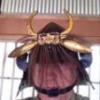
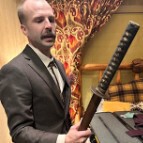
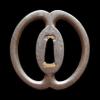
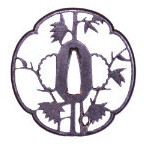

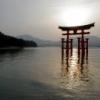
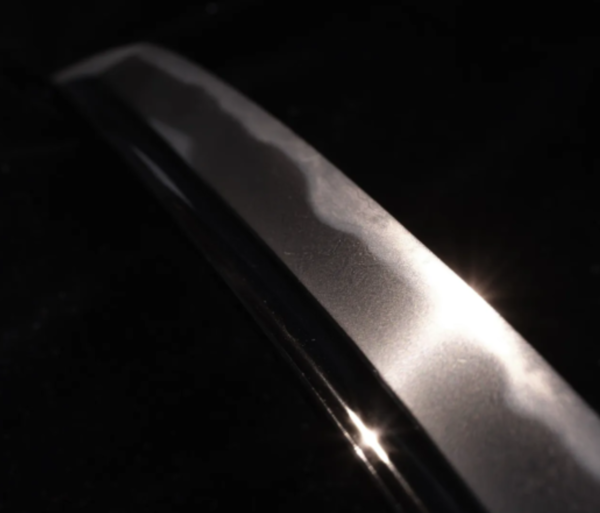

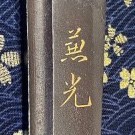












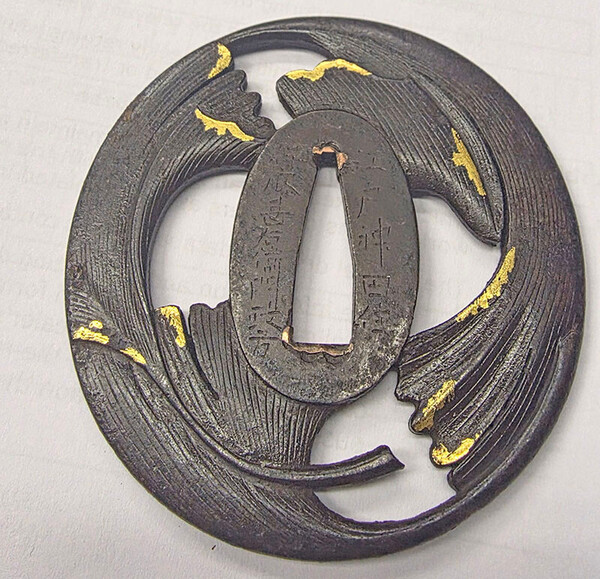

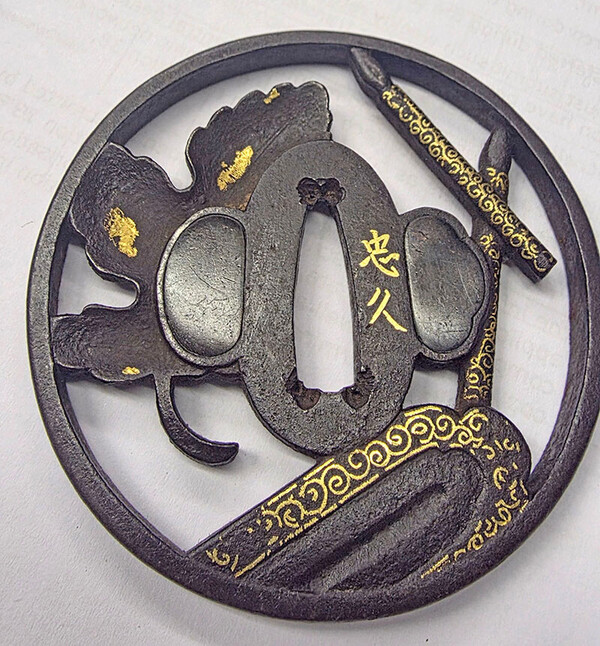


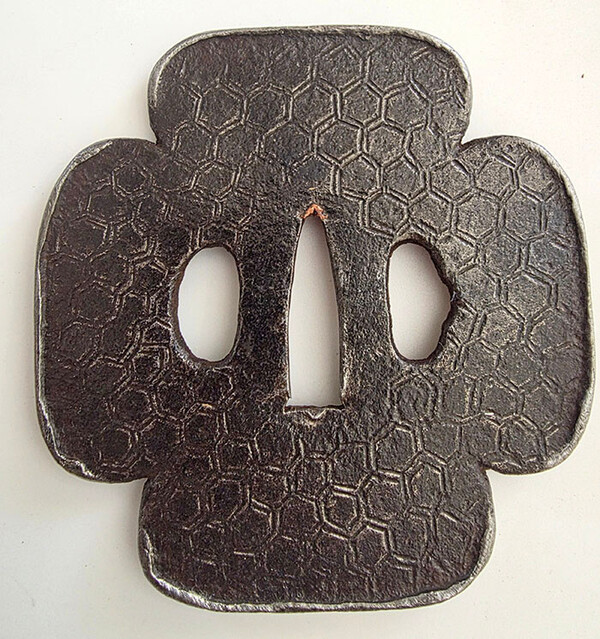

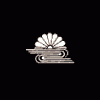
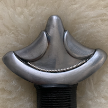
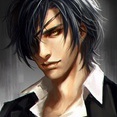






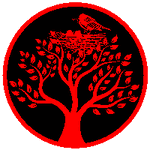



.thumb.png.4c5df79fec171b2dc4a23af38e280a4d.png)
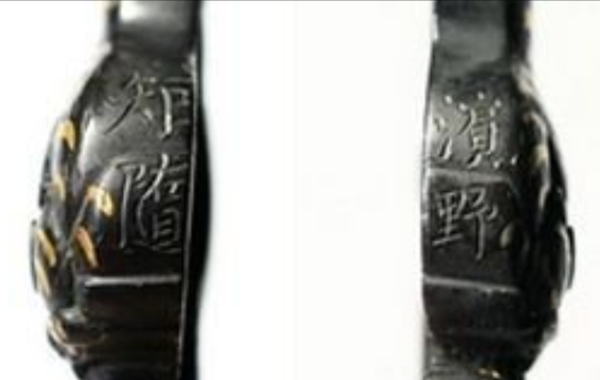



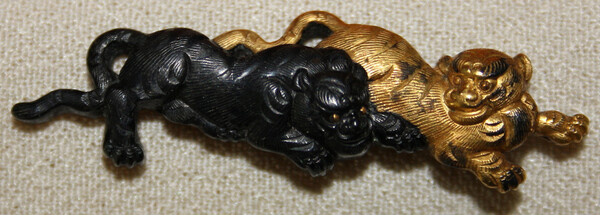

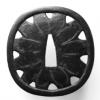
















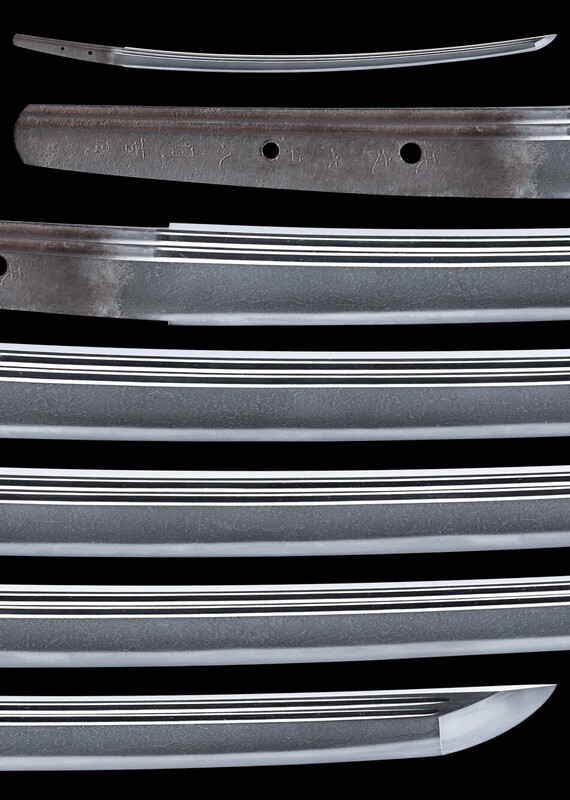
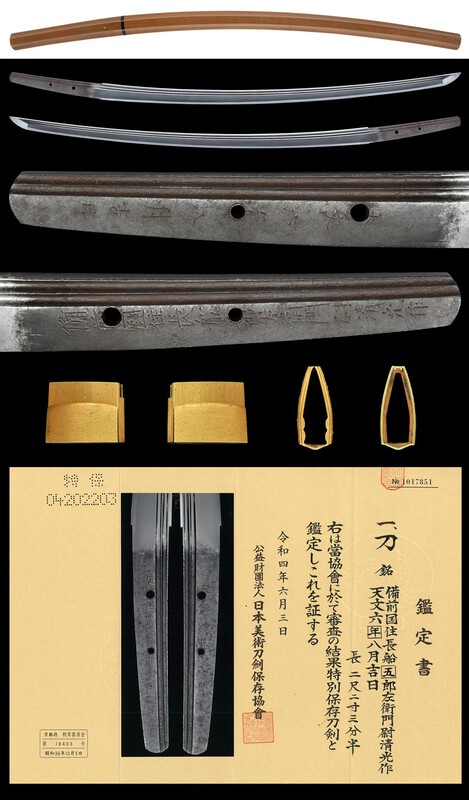
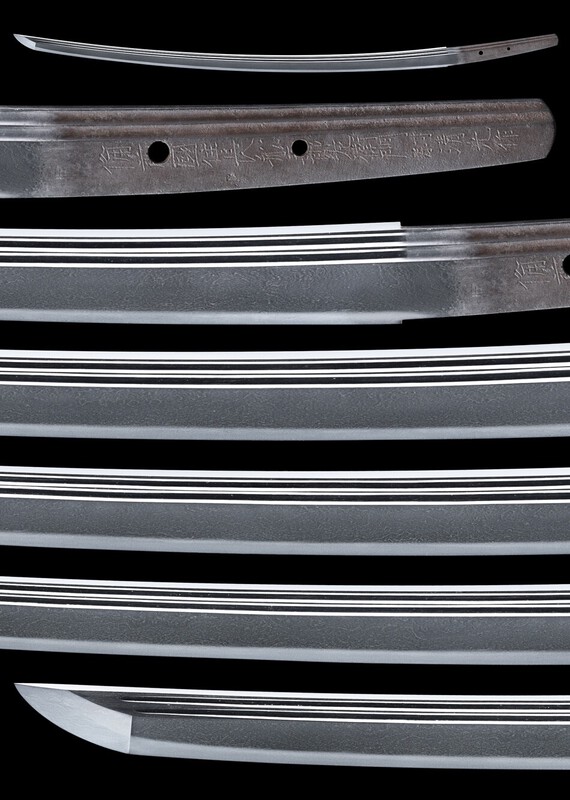

.jpg.100d309ae99885d0f310a7cbf44ca225.jpg)